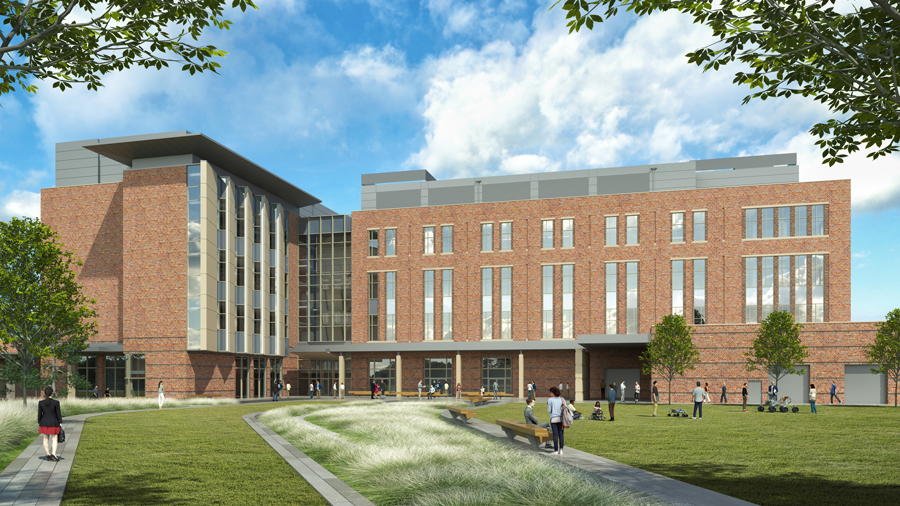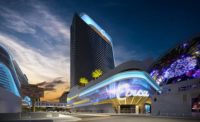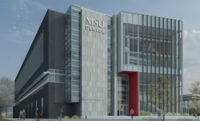The University of Colorado Boulder is set to begin construction this fall on a new 139,000-sq-ft aerospace engineering building complete with an indoor flight environment for testing unmanned aerial systems and a roof design with the sightlines needed to track satellites.
The $82.5-million project was approved by the CU Board of Regents on June 15. It was first conceived in 2008 as an addition to the current Engineering Center. The new building, to be constructed on the east campus, is slated for completion in July 2019, when the Ann and H.J. Smead Dept. of Aerospace Engineering Sciences will move in.
In addition to providing world-class learning spaces, CU officials say the new building will group together aerospace engineering’s six main research clusters in a way that facilitates greater collaboration among students and faculty. The facility will include a 200-seat auditorium, distance-learning-equipped classrooms, faculty offices and spaces for graduate students.
It will also include space modeled after the Integrated Teaching and Learning Laboratory, a hands-on learning environment at the campus’ Engineering Center.
The new building will be located along Discovery Drive between the Sustainability, Energy and Environment Complex (SEEC) and the Laboratory for Atmospheric and Space Physics’ (LASP) Space Science Building. The site also is a short walk from the Center for Astrophysics and Space Astronomy and LASP’s Space Technology Building, part of a synergistic hub of space-related programming on CU Boulder’s east campus.
The facility will help to accommodate the rapid growth experienced by the university’s aerospace program in recent years. Combined undergraduate and graduate enrollment grew from 647 in fall 2011 to 946 in fall 2016, CU says.
Campus Benefits
The rest of the College of Engineering and Applied Science also will benefit from the new building because of the collaborative spaces and interdisciplinary endeavors that the building will foster between aerospace, mechanical and electrical engineers, as well as the college’s mathematicians and computer scientists, department officials say.
They add that the college is well on its way toward achieving its capital campaign fundraising goal for the project, due in part to a gift earlier this year from Ann Smead and Michael Byram, as well as a sponsorship by industry partner Lockheed Martin.
“This is a watershed moment, not just for CU aerospace, but for our entire college, the university and the state of Colorado,” said Bobby Braun, dean of engineering. “CU Boulder is already recognized as a national leader in aerospace, and this state-of-the-art facility will take us to the next level. This facility will be a beacon of innovation for the students, researchers and industries of the future.”
With approval by the CU Boulder Design Review Board already in hand, architects are now wrapping up final drawings. Bids from potential general contractors are expected to be returned in mid-September, with groundbreaking anticipated for November.



